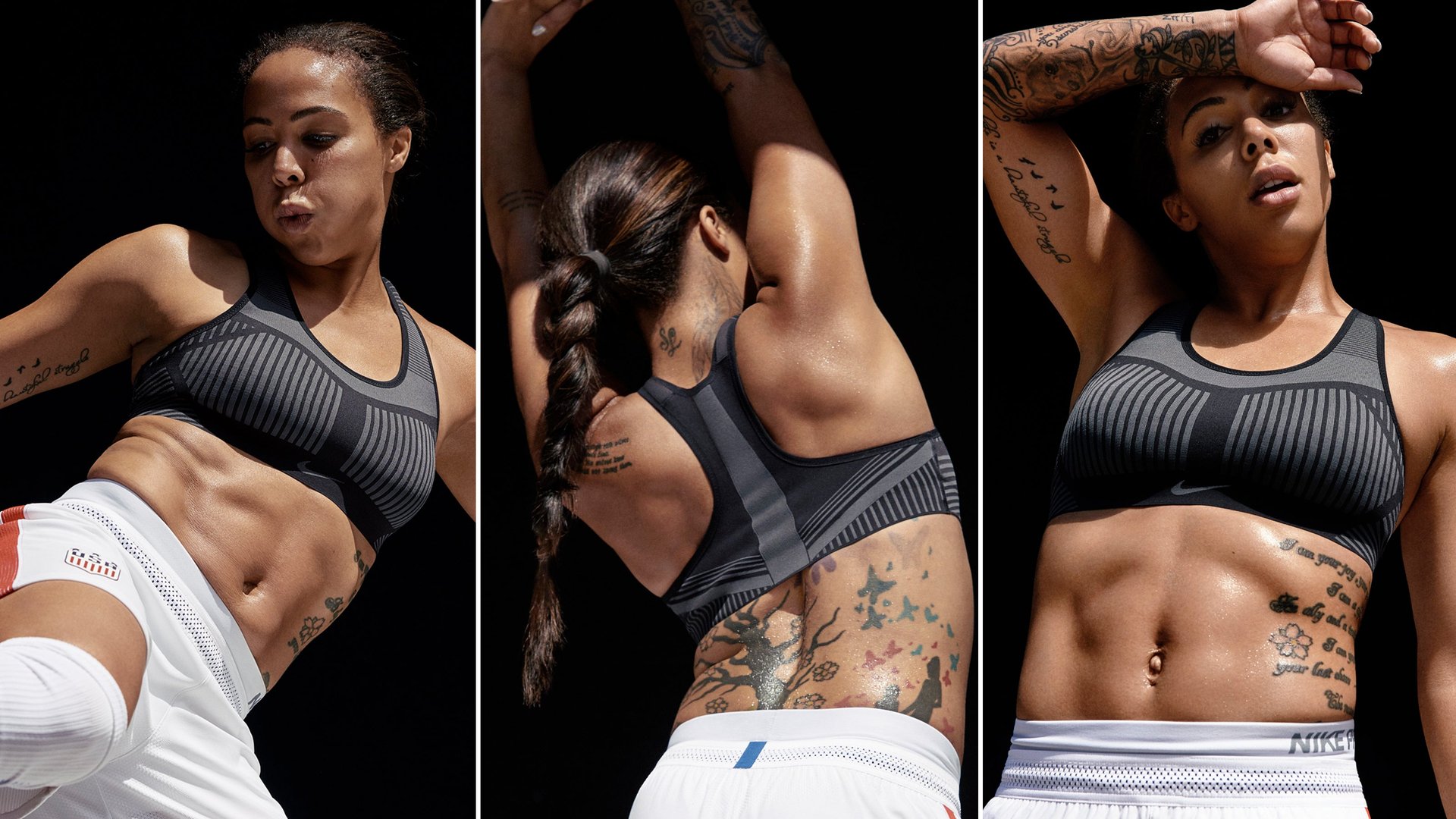Nike is using its innovative knit sneaker technology, Flyknit, to make a better sports bra
When Nike introduced Flyknit in 2012, the material represented a major breakthrough in the sneaker industry. Sneaker uppers were traditionally made from pieces of material that had been cut out and sewn together. Nike’s innovation was a tough, durable knit, almost like a sock, that made for a nearly seamless shoe and conformed to the wearer’s foot. It improved fit and reduced weight, as well as the waste that comes from cutting pattern pieces out of sheets of material. Nike beat archrival Adidas to market with the knit upper, and Flyknit became another signature technology that Nike used throughout its footwear offering.


When Nike introduced Flyknit in 2012, the material represented a major breakthrough in the sneaker industry. Sneaker uppers were traditionally made from pieces of material that had been cut out and sewn together. Nike’s innovation was a tough, durable knit, almost like a sock, that made for a nearly seamless shoe and conformed to the wearer’s foot. It improved fit and reduced weight, as well as the waste that comes from cutting pattern pieces out of sheets of material. Nike beat archrival Adidas to market with the knit upper, and Flyknit became another signature technology that Nike used throughout its footwear offering.
For the first time, Nike is now adapting those capabilities to apparel, and the product it chose for Flyknit’s introduction into its clothing is one notoriously difficult to engineer: the sports bra.
The sports bra places a lot of demand on designers. Breasts are held in place by little more than skin, and they have compositions and shapes that vary quite a bit from woman to woman. A good sports bra needs to offer support to a range of women, through a range of movements, staying snug without being restrictive. It should also be breathable, and not heavy. Together, these requirements make for a surprisingly complex challenge. (“If you can build a bra, you can build a bridge,” designer Jill Andrews once said.)
According to Nike, its women’s design team had spoken to female athletes about their needs, and decided that Flyknit offered the best solution, given the way it to hold its shape and offers targeted support in different areas based on its knit structure. Nike says the new FE/NOM Flyknit bra forms to your body, cupping each breast individually and holding it firmly without the need of additional components such as wires, elastics, or pads.

Like Flyknit sneakers, the Flyknit bra also cuts down significantly on seams and potentially uncomfortable stitching. Nike’s previous sports bras, which were designed like many of the others you see on the market, were composed of up to 41 separate pieces. The new FE/NOM Flyknit bra is made of just two, and it is 30% lighter than any other bra Nike offers. Nike also made sure the nylon-spandex yarn it used was breathable to keep the wearer cool and dry.
The bra is an important release for Nike, not just because of its use of Flyknit. By 2020, Nike intends to reach $50 billion in annual sales, up substantially from the $34.4 billion (pdf) it sold last year. Its women’s business will play a key role. Nike made had $5.7 billion in sales there in 2015, and wants to nearly double that to $11 billion; sports bras and tights are two core women’s items it wants to build on.
Sports bras are a good category to bet on. Millennials love them, and not just for exercise. Research firm NPD Group found 46% of millennials in a survey last year had incorporated the bras into their everyday wardrobes.
Nike is fully aware. Style was a major focus in the development of its FE/NOM bra. At an event in New York yesterday (July 12), Nike’s senior bra-innovation designer, Nicole Rendone, wore one as a top underneath an open-backed Comme des Garçons blazer. For many women, she insisted, the sports bra is the new t-shirt.